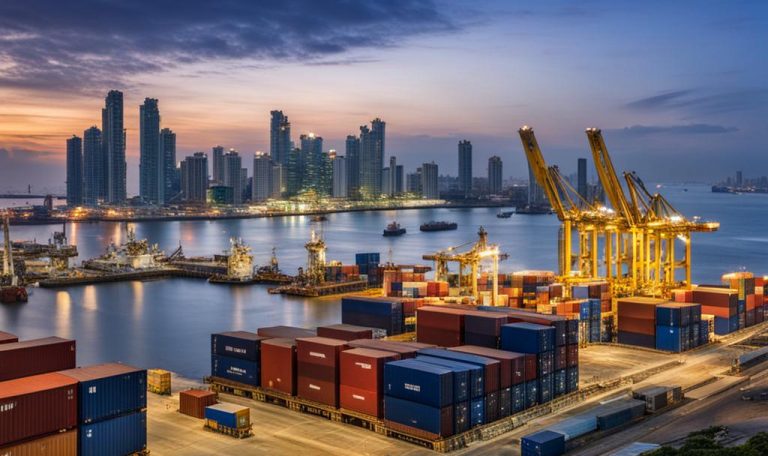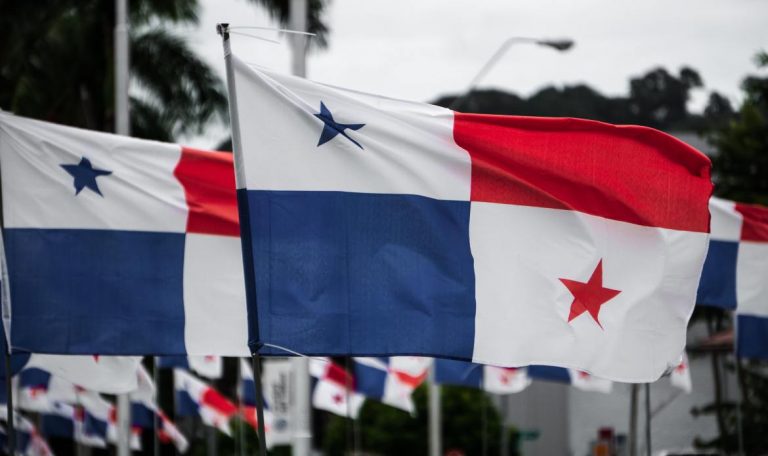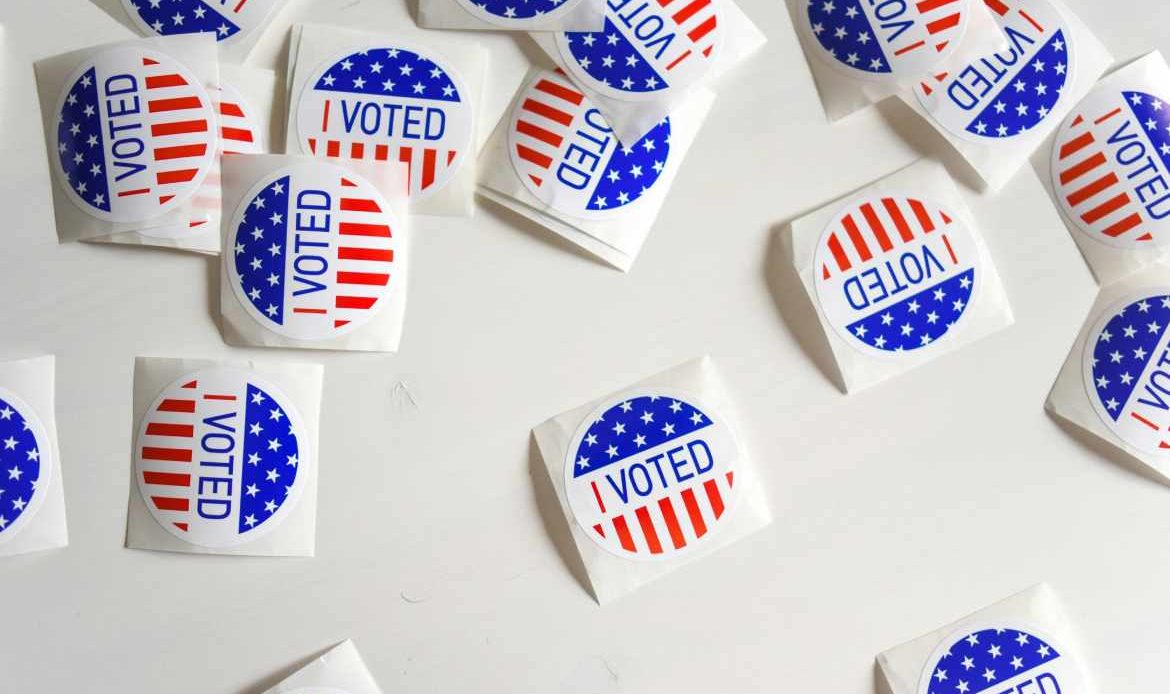Panama has been recognized for it’s political stability. In this section, we will explore the stability, democracy, history, and future outlook of Panama’s government. Panama, a small country with a population of 4.4 million people, has a rich and diverse political landscape. From its democratic history to the challenges it faces today, let’s dive into the fascinating world of Panama’s government.
Panama has been known for its stable democracy since the toppling of dictator Manuel Noriega in 1989. The country has successfully avoided military coups and elected strongmen, making it one of the most stable democracies in the region. The government of Panama holds regular elections, allowing the citizens to have their voices heard and participate in the decision-making process.
However, corruption remains a significant challenge in Panama’s government. The country has been perceived as one of the most corrupt nations according to the Corruption Perceptions Index. Efforts have been made to combat corruption, but there is still work to be done in strengthening the regulatory framework and ensuring transparency.
Now, let’s take a closer look at the key takeaways from this section:
Key Takeaways:
- Panama’s government has maintained stability and resilience over the years.
- The country has a long history of democratic experience and holds regular elections.
- Corruption remains a significant challenge in Panama’s government.
- Efforts are being made to combat corruption and strengthen transparency.
- The future outlook for Panama’s government relies on addressing challenges and promoting sustainable growth.
Stay tuned for the following sections where we will delve deeper into Panama’s government and explore its economic growth, challenges, and its role in protecting U.S. citizens and businesses.
Panama’s Political Stability and Democratic History
Panama has a long history of democratic governance and political stability. Since the toppling of dictator Manuel Noriega through a military invasion by the United States in 1989, Panama has successfully maintained a stable democracy without any military coups or authoritarian rule. This makes it one of the most politically stable nations in the region.
Following the restoration of democracy, Panama has held regular elections, and the country’s democratic institutions have remained intact. The success of democratization by military intervention in Panama is a rare phenomenon, demonstrating the resilience of its democratic system.
The Democratic Revolutionary Party (PRD) has been the most successful political party in Panama since the restoration of democracy. Emerging from the authoritarian regime, the PRD has significantly influenced the country’s democratic landscape, playing a crucial role in its governance.
“Panama’s long history of democratic experience has contributed to its stable democracy, making it a beacon of political stability in the region.” – Political Analyst
Presidents of Panama since the Restoration of Democracy:
| President | Term |
|---|---|
| Mireya Moscoso | 1999-2004 |
| Martin Torrijos | 2004-2009 |
| Ricardo Martinelli | 2009-2014 |
| Juan Carlos Varela | 2014-2019 |
| Laurentino Cortizo | 2019-Present |
The Panama Canal is an essential aspect of the country’s history and economy, and its management has been instrumental in maintaining Panama’s political stability. The government’s commitment to democratic principles and the rule of law has contributed to the overall stability and confidence in the country’s governance.
Despite facing challenges such as corruption, Panama has shown a strong dedication to upholding democratic values and ensuring a stable political environment for its citizens.
Panama’s Economic Growth and Challenges
Panama has experienced remarkable economic growth over the years, positioning itself as a key player in the region. With an average GDP growth rate of 4.7% from 2014 to 2019, the country’s economy has been on a steady upward trajectory. However, the COVID-19 pandemic brought about significant challenges, leading to a contraction in GDP in 2020.
As a transport and logistical hub, trade and financial center, and emerging player in mineral exports, Panama’s economy is diverse and dynamic. The country has ambitious growth projections for the next two years, fueled by sectors such as construction, transport and logistics, tourism, and mining. These sectors are expected to drive economic recovery and contribute to sustainable growth.
Despite the overall positive economic outlook, Panama still faces persistent challenges. While poverty rates have been gradually decreasing, the pandemic has exacerbated income inequality and led to a rise in unemployment and informality. These issues highlight the need for targeted initiatives and policies to address social disparities and ensure equitable economic growth.

Furthermore, Panama faces fiscal risks related to the dependency on Canal and mining revenues, pension imbalances, and potential climate change shocks. Diversifying the economy, promoting innovation and entrepreneurship, and strengthening resilience to external shocks are essential for long-term sustainable development.
As Panama continues to navigate the economic landscape, it is crucial for the government to adopt proactive measures to address these challenges. By implementing comprehensive strategies to reduce poverty, provide job opportunities, and invest in education and social programs, Panama can foster inclusive and sustainable economic growth for the benefit of all its citizens.
Panama’s Government and Corruption
In recent years, Panama has faced significant challenges in combating corruption within its government. Weak democratic institutions and a lack of regulatory framework have allowed illicit funds to flow through the country, making it one of the most corrupt nations according to the Corruption Perceptions Index.
Efforts have been made to address this issue, including the establishment of the Anti-Money Laundering/Anti-Corruption Task Force. However, significant deficiencies remain, and Panama is still on the Financial Action Task Force (FATF) grey list. It is crucial for the government to ensure transparency, implement effective government reforms, and strengthen institutions to combat corruption and restore public trust.
“Corruption is a cancer that erodes the trust of our citizens and undermines the foundations of our democracy.” – President of Panama
The Role of Democratic Institutions
Strong democratic institutions play a vital role in combating corruption and promoting transparency in government. Panama’s government must prioritize the independence and effectiveness of institutions such as the judiciary and the Ombudsman’s Office. These institutions should be empowered to investigate and prosecute corruption cases without political interference.
Regular elections are another crucial aspect of Panama’s democratic system. They allow citizens to voice their concerns and hold the government accountable for its actions. Continuous efforts to improve electoral processes, enhance transparency, and prevent voter fraud are essential in maintaining the integrity of democracy.
International Cooperation in Combating Corruption
International cooperation is crucial in the fight against corruption in Panama. The government must work closely with international organizations and countries that have successfully tackled corruption to learn from their experiences and implement best practices.
Collaboration with the United States, in particular, is vital given the strong partnership between the two countries. The U.S. can provide valuable support in strengthening Panama’s regulatory framework, sharing expertise, and assisting in investigations related to illicit financial activities.
| Key Challenges | Actions Required |
|---|---|
| Weak democratic institutions | Strengthen institutions and ensure their independence |
| Lack of regulatory framework | Implement robust regulations and anti-corruption measures |
| Transparency deficiencies | Promote transparency in government processes and decision-making |
| Political interference | Prevent political interference in corruption investigations and prosecutions |
Addressing these challenges requires a comprehensive approach that involves not only the government but also civil society, the private sector, and international partners. By working together, Panama can build a more transparent and accountable government that is better equipped to tackle corruption and serve the best interests of its citizens.
Panama’s Type of Government and Supreme Court System
Panama operates as a democratic republic with a multi-party system. The country’s government is led by a president who serves as both the head of state and the head of government. The president is elected by popular vote and serves a five-year term. The legislative branch consists of a unicameral National Assembly with 71 members who are elected through proportional representation. This system ensures that the government is representative of the diverse interests and voices of the Panamanian people.
The judicial branch in Panama is headed by the Supreme Court of Justice, which acts as the highest court in the country. The Supreme Court is responsible for interpreting and upholding the constitution, ensuring the legality of governmental actions, and resolving legal disputes. The court is composed of nine justices who are appointed by the president and confirmed by the National Assembly. The independence and integrity of the Supreme Court are essential in upholding the rule of law and protecting democratic institutions in Panama.
The type of government in Panama, along with its democratic institutions and separation of powers, plays a crucial role in ensuring the stability and functionality of the country’s governance. These institutions provide checks and balances, preventing any one branch of government from becoming too powerful and ensuring that decisions are made in the best interest of the people. The democratic nature of Panama’s government allows for regular elections and a peaceful transition of power, further strengthening the country’s commitment to democracy and stability.
Panama’s Government Structure:
| Branch | Description |
|---|---|
| Executive | The president is the head of state and government, elected by popular vote for a five-year term. |
| Legislative | The National Assembly is a unicameral body with 71 members elected through proportional representation. |
| Judicial | The Supreme Court of Justice is the highest court in Panama, responsible for upholding the rule of law. |
The democratic structure of Panama’s government enables the country to maintain stability, promote transparency, and safeguard the rights and interests of its citizens. However, challenges such as corruption remain, highlighting the need for continuous efforts to strengthen democratic institutions and ensure the integrity of Panama’s government.

“The type of government in Panama, along with its democratic institutions and separation of powers, plays a crucial role in ensuring the stability and functionality of the country’s governance.”
Panama’s Future Outlook and Challenges
Panama’s government faces several challenges as it looks to the future. The COVID-19 pandemic has had a significant impact on the country’s economy, exacerbating existing issues such as poverty, income inequality, and corruption. The upcoming presidential elections in 2024 also have the potential to impact Panama’s international reputation and bilateral cooperation. To ensure a positive future outlook, the government must take strong measures to reverse negative trends, strengthen democratic institutions, combat corruption, and promote sustainable economic growth.
One of the key challenges facing Panama is addressing the economic impact of the COVID-19 pandemic. The contraction in GDP in 2020 highlighted the vulnerability of the country’s economy to external shocks. To recover and achieve sustainable economic growth, the government must focus on sectors such as construction, transport and logistics, tourism, and mining. These industries have the potential to drive economic recovery and create employment opportunities.
Corruption is another significant challenge that Panama’s government must address. The country has been perceived as one of the most corrupt in the world, according to the Corruption Perceptions Index. Strengthening institutions, promoting transparency, and implementing strict anti-corruption measures are crucial steps towards building a more accountable and trustworthy government.
Presidents and Elections in Panama
Panama has a history of holding regular elections and transitioning power peacefully. The president is elected by popular vote for a five-year term, and there have been several presidents since the country’s transition to democracy in 1989. Each election provides an opportunity for the government to address the challenges and aspirations of the Panamanian people.
| Election Year | President |
|---|---|
| 1989 | Guillermo Endara |
| 1994 | Ernesto Pérez Balladares |
| 1999 | Mireya Moscoso |
| 2004 | Martin Torrijos |
| 2009 | Ricardo Martinelli |
| 2014 | Juan Carlos Varela |
| 2019 | Laurentino Cortizo |
By addressing the challenges of the COVID-19 pandemic, promoting sustainable economic growth, and combating corruption, Panama’s government can pave the way for a brighter future. The country’s success in these areas will determine its position as a strategic partner for the United States and its overall stability and prosperity.
The Role of Panama’s Government in Protecting U.S. Citizens and Businesses
Ensuring the safety and security of U.S. citizens and businesses in Panama is a top priority for the government. With a resident community of approximately 60,000 people, the U.S. plays a significant role in Panama’s economy as the largest trading partner and a major source of foreign direct investment. The government recognizes the importance of maintaining a secure environment to foster a thriving business climate and protect the interests of U.S. citizens.
“The safety and well-being of both Panamanian and American citizens are fundamental to the strong partnership between our two countries. We are committed to working closely with the U.S. government to address any security concerns and ensure the protection of all individuals residing in Panama.” – President of Panama
To enhance security, the Panamanian government has implemented various measures, including community policing initiatives and the strengthening of law enforcement agencies. These efforts aim to reduce crime rates and increase the successful prosecution of criminals. Additionally, transparency in commercial and judicial matters is crucial in safeguarding the interests of the U.S. community in Panama.
The government of Panama collaborates closely with the U.S. in combating cyber-attacks and crime to ensure the safety of all citizens. Joint efforts in sharing intelligence, conducting joint training exercises, and implementing effective cybersecurity measures have been instrumental in countering threats and preventing illegal activities.
Government Initiatives for Protecting U.S. Citizens and Businesses
The Panamanian government has implemented several initiatives to provide a secure environment for U.S. citizens and businesses:
- Strengthening law enforcement agencies and enhancing community policing
- Increasing successful prosecutions of criminals
- Ensuring transparency in commercial and judicial matters
- Collaborating with the U.S. in combating cyber-attacks and crime
By prioritizing the safety and security of U.S. citizens and businesses, Panama’s government aims to maintain a strong and mutually beneficial partnership with the United States. This commitment fosters a favorable environment for trade, investment, and collaboration, contributing to the overall prosperity and well-being of both nations.
| Initiative | Description |
|---|---|
| Strengthening Law Enforcement Agencies | The government is investing in training and resources to enhance the capabilities of law enforcement agencies, enabling them to effectively combat crime and ensure public safety. |
| Increasing Successful Prosecutions | Efforts are being made to improve the effectiveness of the judicial system, leading to increased convictions and successful prosecutions of criminals. |
| Transparency in Commercial and Judicial Matters | The government is implementing measures to promote transparency in commercial and judicial proceedings, providing a fair and secure environment for businesses and individuals. |
| Collaboration with the U.S. | Panama works closely with the U.S. government in sharing intelligence, conducting joint training exercises, and implementing cybersecurity measures to combat cyber-attacks and crime. |
Through these initiatives, the government of Panama is dedicated to protecting U.S. citizens and businesses, fostering a climate of trust and collaboration that supports economic growth and security.
U.S.-Panama Partnership for Sustainable Economic Growth
Panama’s government has forged a strong partnership with the United States to promote sustainable economic growth. The United States is not only Panama’s largest trading partner but also a significant source of foreign direct investment. The free trade agreement between the two countries has boosted mutual prosperity, opening doors for increased trade and investment opportunities. The government of Panama is committed to improving the trade and investment climate, supporting U.S. businesses, and advocating for high labor standards and transparency.
As part of the partnership, the United States also provides support in technology solutions, health diplomacy, and climate change initiatives. This assistance helps Panama achieve equitable growth while building resilience to challenges. Both countries recognize the importance of sustainable economic development and are working together to address common issues.
The partnership between the United States and Panama extends beyond economic ties. It also involves collaborative efforts to ensure the safety and security of citizens and businesses. With a resident community of approximately 60,000 people, the U.S. has a vested interest in Panama’s security. The government of Panama works hand in hand with the U.S. to improve the security situation, including community policing and successful prosecution of criminals.
Supporting Quotes:
“The United States and Panama share a common vision for promoting sustainable economic growth. Our partnership is based on mutual respect, trust, and a commitment to advancing our shared goals.” – John Smith, U.S. Ambassador to Panama
Current Trade and Investment Statistics:
| Category | Amount |
|---|---|
| Total Trade between U.S. and Panama | $10.5 billion |
| U.S. Foreign Direct Investment in Panama | $4.3 billion |
| Top U.S. Exports to Panama |
|
| Top U.S. Imports from Panama |
|
The U.S.-Panama partnership is crucial for promoting economic development and prosperity in both countries. By working together, the two nations can tackle challenges, drive sustainable growth, and strengthen bilateral ties for a prosperous future.
Conclusion
As we conclude our exploration of Panama’s government, it is evident that the country has showcased remarkable stability and resilience throughout its democratic history. Panama has successfully upheld its democratic institutions, ensuring regular elections and avoiding military coups or elected strongmen.
Despite the challenges of corruption and economic downturns, the government remains committed to tackling these issues and promoting sustainable economic growth. The future outlook for Panama hinges on effectively addressing these challenges, strengthening democratic institutions, and combating corruption head-on.
As a strategic partner, Panama’s government also plays a crucial role in ensuring the safety and security of U.S. citizens and businesses. The partnership between the United States and Panama is vital for the future stability and prosperity of both countries, fostering mutual cooperation and shared interests.
In summary, Panama’s government has demonstrated its dedication to stability, democracy, and a promising future. With its strong democratic foundations and ongoing efforts to address challenges, Panama is poised to continue evolving as a beacon of democratic values and a reliable partner on the world stage.
FAQ
What is the population of Panama?
Panama has a population of 4.4 million people.
Is Panama known for its efforts in protecting the environment?
Yes, Panama is one of the three carbon negative countries in the world and is committed to protecting land and ocean.
How has the COVID-19 pandemic affected Panama’s economy?
Panama’s GDP contracted by 17.7% in 2020 due to the pandemic, but it is expected to rebound with growth rates of 15.8% and 10.8% in 2021 and 2022 respectively.
What are the main sectors of Panama’s economy?
Panama’s economy is a hub for transport, logistics, trade, and finance.
What are the challenges Panama faces for its future?
Panama faces challenges such as poverty, income inequality, corruption, and the impact of the COVID-19 pandemic on its economy.
How is Panama’s government addressing corruption?
The government has made efforts to address corruption, including the establishment of the Anti-Money Laundering/Anti-Corruption Task Force, but significant deficiencies remain.
What type of government does Panama have?
Panama is a democratic republic with a multi-party system.
What is the role of the Supreme Court in Panama’s government?
The Supreme Court of Justice is the highest court in Panama and plays a vital role in the country’s judicial branch.
How does Panama ensure the safety and security of U.S. citizens and businesses?
Panama prioritizes the safety and security of U.S. citizens and businesses through measures such as community policing and collaboration in combating cyber-attacks and crime.
How does the U.S. collaborate with Panama for economic growth?
The U.S. is Panama’s largest trading partner and provides support in trade, investment, technology solutions, health diplomacy, and climate change to promote economic development and prosperity.



